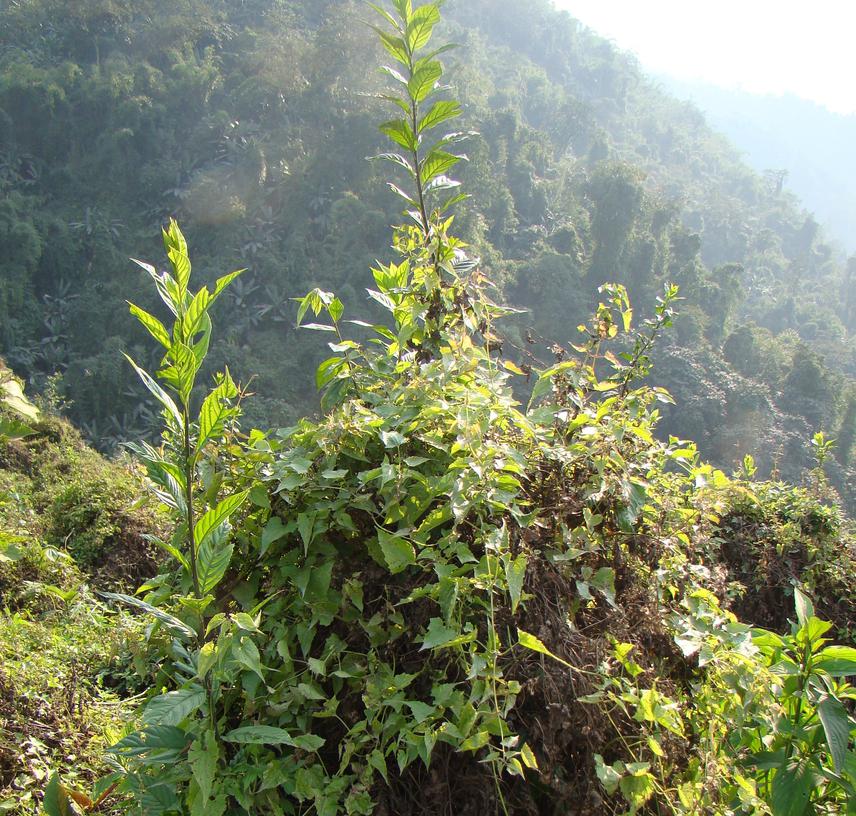Karthik Teegalapalli
In my project, I aim to identify the role of biotic and abiotic factors at the local scale and the role of topographic factors at the landscape scale that affect the spread of the species. By combining the results from correlates of the species presence at these two scales, I will identify sites that are vulnerable to future invasion by the species, which will have important implications for management of the species.

Mikania micrantha, a neotropical climber plant has rapidly invaded Asian tropical forests including the biodiversity hotspot of Arunachal Pradesh in north-east India. The species is native to Latin America and is believed to have been introduced in India during the Second World War to camouflage air fields. It is listed among the world’s 100 most invasive alien species by the International Union for Conservation of Nature. Several attributes of the species have been reported to have resulted in its rapid colonisation: relatively fast growth rate, resprouting capacity, adaptation to fire, relatively abundant seed dispersal by wind, humans and animals, and vegetative propagation.
By inhibiting natural forest regeneration, it has negatively affected native biodiversity and local economies. Inadequate understanding of the factors that facilitate this invasion has precluded its control. In my project, I aim to identify local and landscape characteristics that make some forest sites vulnerable and others resilient to invasion. The project will be undertaken in the Upper Siang district in Central Arunachal Pradesh, north-east India. A significant portion of the district is forested and the study area is located within the buffer zone of the Dihang Dibang Biosphere reserve (area: 5112 sq. km). The Adi community resident in this region practice systematic subsistence shifting cultivation with relatively long fallow periods (the period between two cultivation phases is about 12 years). My goal is to assist in developing a scientific management strategy to control this ecologically and economically damaging biological invasion by combining the results of field work and analysis of satellite imagery.